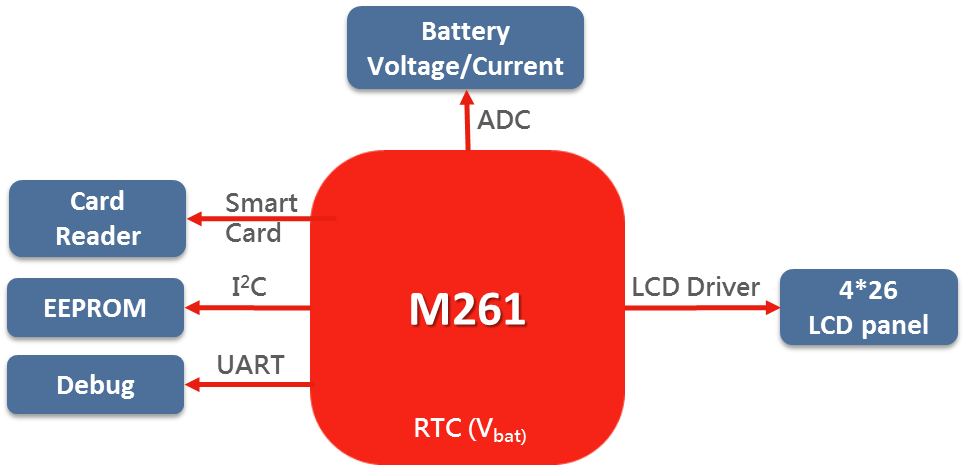【New infrastructure for ultra-high voltage series 3 of 3】M23 and M4 based Smart Meters and Smart Capacitors
Smart meters are hidden in smart cities
In response to the global energy conservation trend and accelerating low-carbon energy transformation, the automated metering infrastructure (AMI), i.e., the smart meter, is a trend of the global electric power industry.
What is a smart meter? A smart meter can report power consumption to a power company over the internet, while a traditional meter can show only the power consumption of each month. With the smart meter, we can inquire about the hourly power consumption through internet transmission or equipment.
Nuvoton provides a total solution for the smart meter. The M261 is a series of high-performance low-power microcontrollers that consume power at only 45µA/MHz in regular operation and 2µA/MHz in the power-down mode, which can support smart meter operation for up to 3 years. Besides, the M261 provides the 128-bit AES and a range of encryption functions required by the smart meter to meet the needs of various types of smart meters.
Solution Features:
Features of Nuvoton M261 Solution
- Low power consumption: 45 µA/MHz (normal operation)
- 2.0 µA/MHz (power-off mode, RTC on)
- Up to 512KB flash memory for OTA function
- AES 128bit for crypto function
- RTC with Vbat independent power supply

NuMicro M453 for Smart Capacitors
Power output in alternate current (AC) grid comprises two sections: active power and reactive power. A smart capacitor aims to compensate for the inactive power in an AC grid to raise the power factor of a power system.
In a power system, active power refers to the system’s power output capacity (wattage). Active power aliments various electronic products, and the total output of active management can be converted into the monthly power consumption (kWh) of electronic products. Inactive power is mainly used to create a magnetic field in electronic products. Any electronic products containing a coil require idle ability to create a magnetic field. Although inactive power does not produce outward work, many electronic products, such as transformers and mechanism motors, will not operate appropriately in the absence of a magnetic field created by active power.
As the parameter for assessing the proportion of inactive power and active power in a power system, the power factor also represents the efficiency of system operation: the lower the power factor is, the weaker the active power is output from the system. Through the power factor, we can understand the outward work capacity of a power system.
In general, the inactive power from a power system cannot meet the needs of electronic products. Therefore, some static compensation devices are required for a power grid to replenish idle energy to fulfill the inactive power demand of users. This way, electricity-using equipment can work under the nominal voltage. This is the primary purpose of smart capacitors.
Why is the NuMicro M453 suitable for smart capacitors?
- ARM Cortex-M4-based running at 72MHz with DSP support to enhance computing efficiency.
- Support one CAN2.0B for communication with other capacitors within the grid.
- Up to 12 channels of 1MSPS, 12-bit ADC that can fully support the voltage and current sampling requirements of the system
- Support up to 82 LQFP100 I/Os for control over a large number of relays.